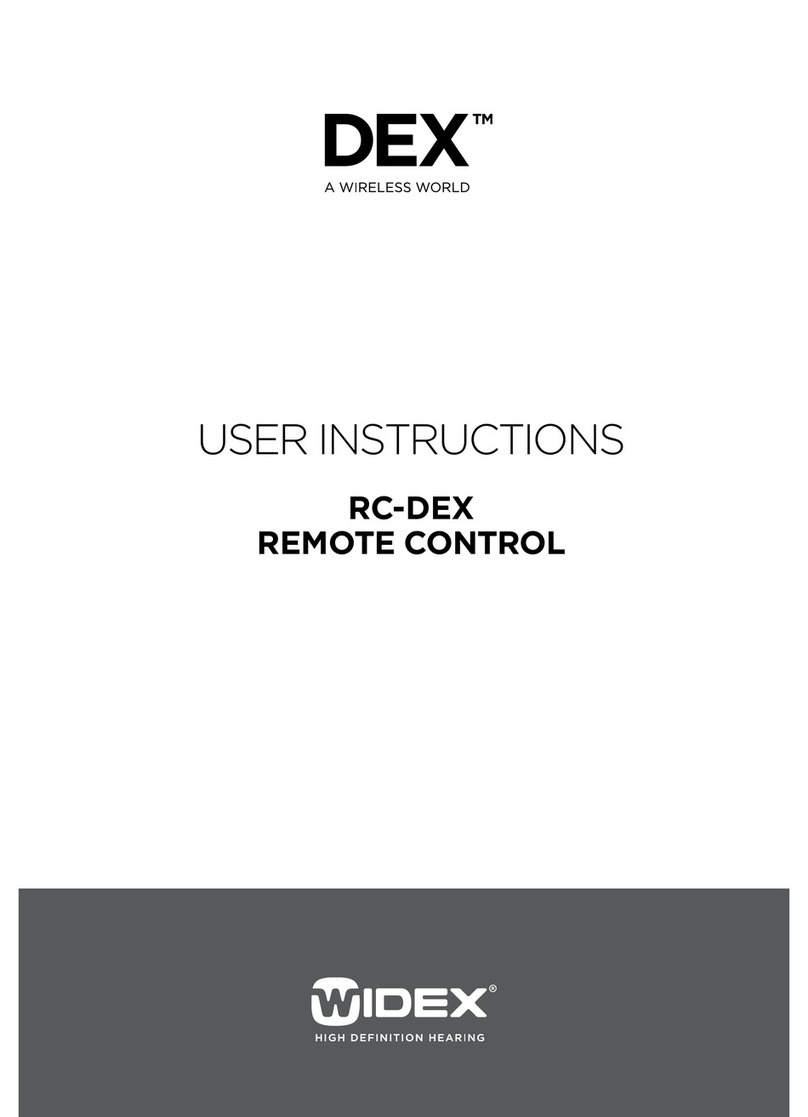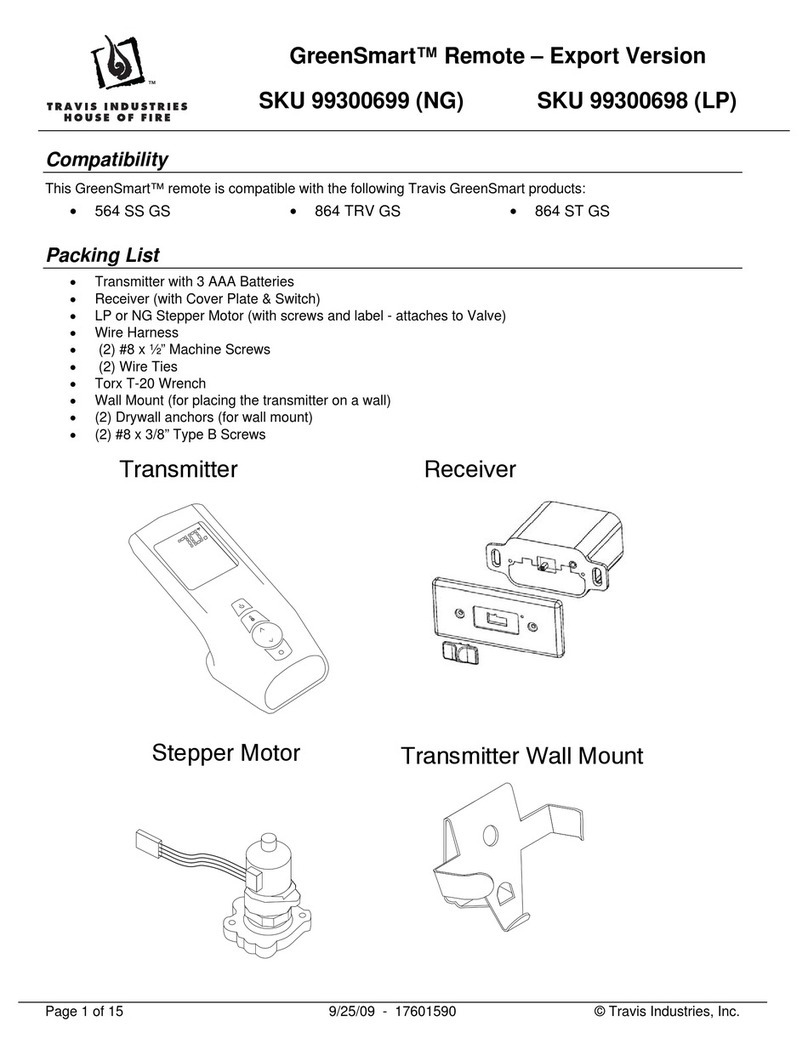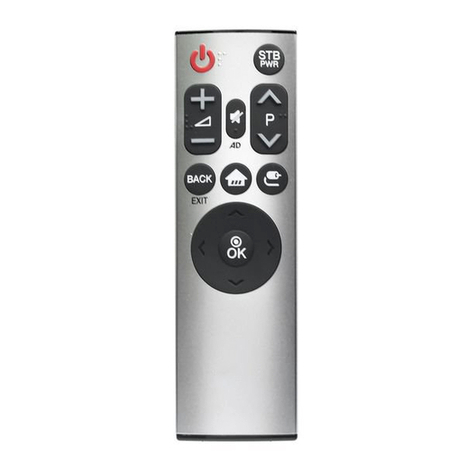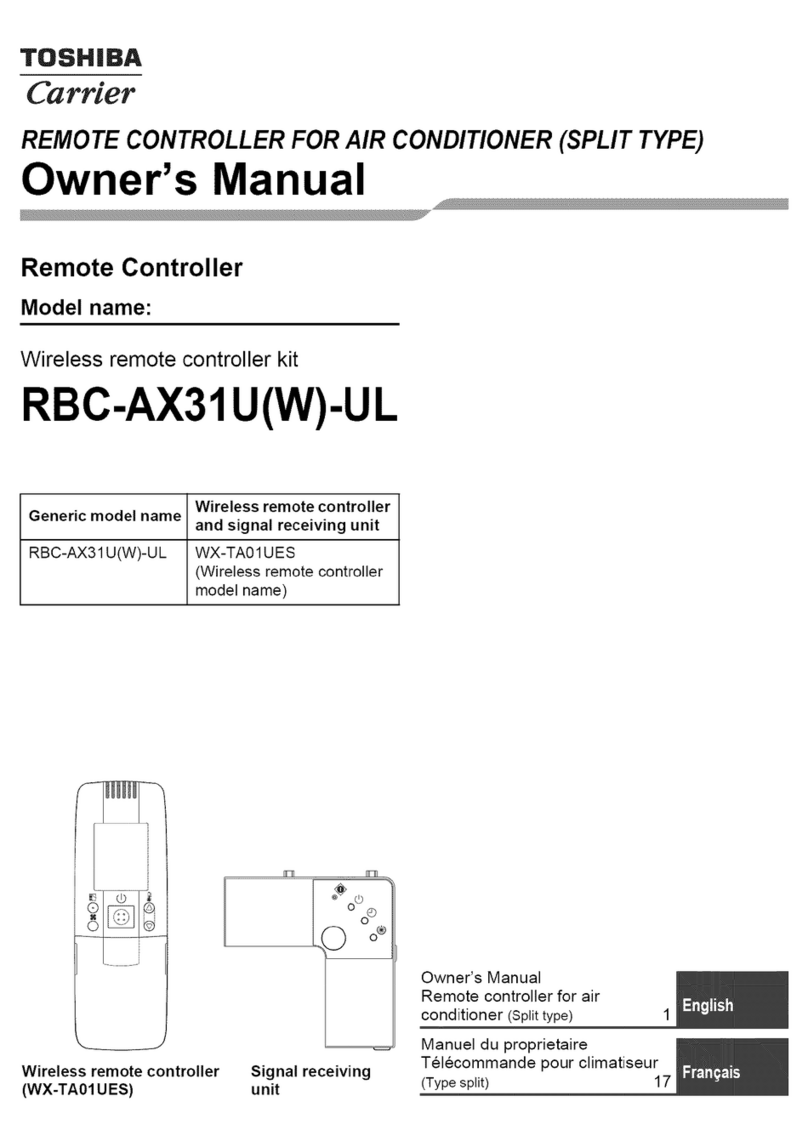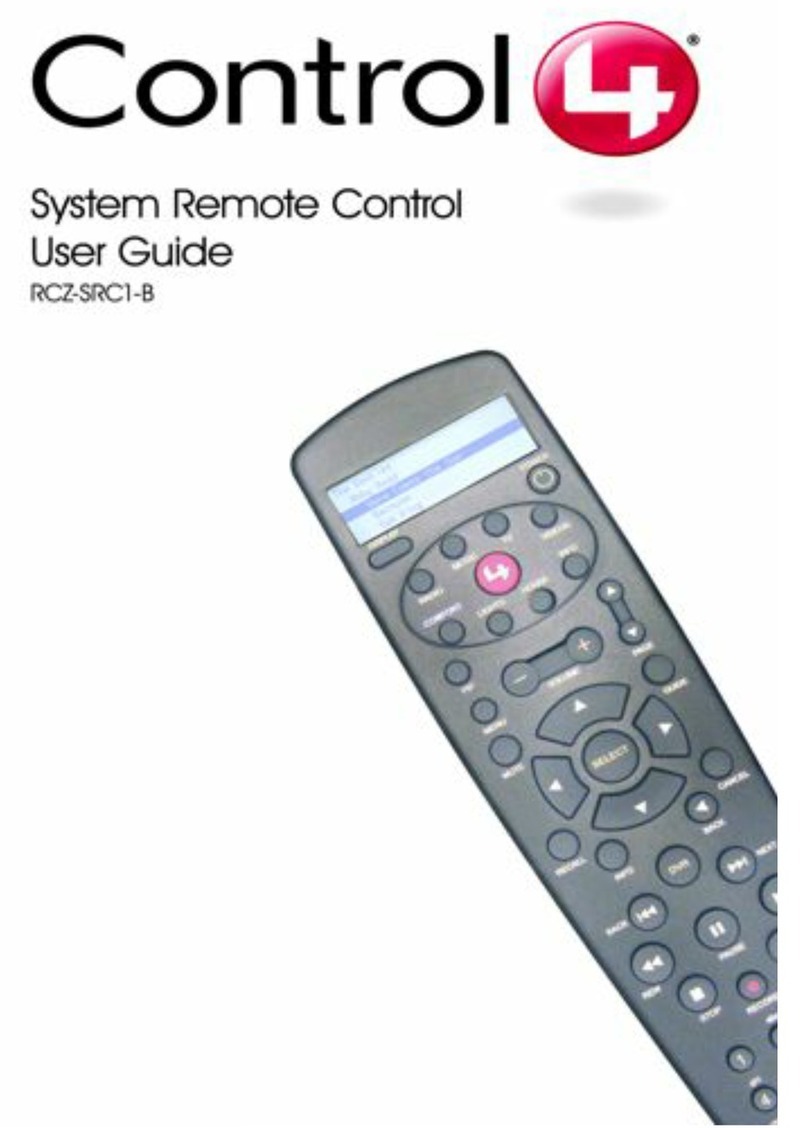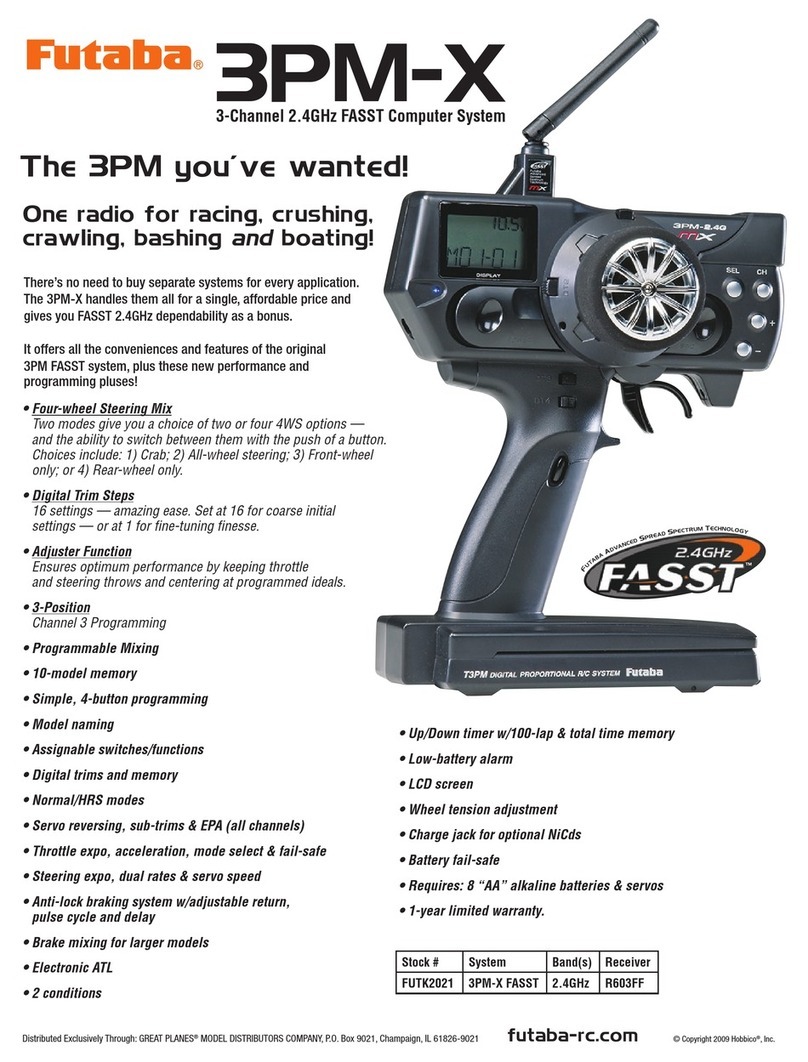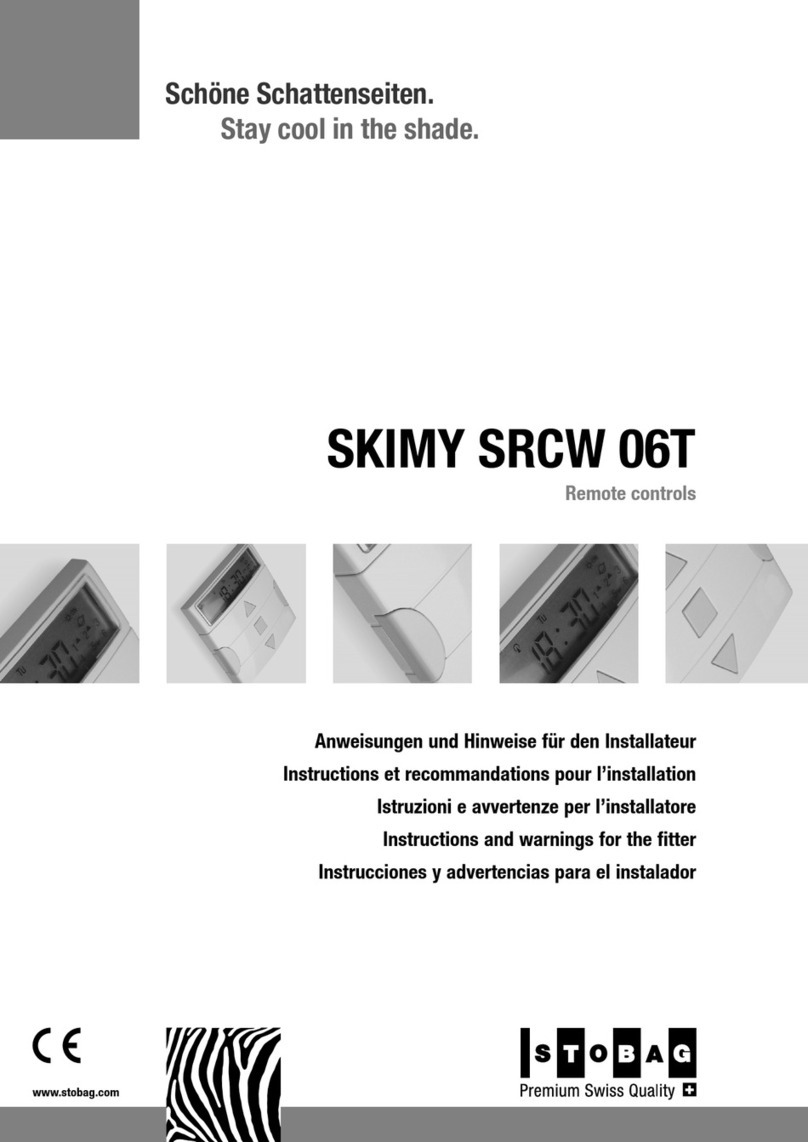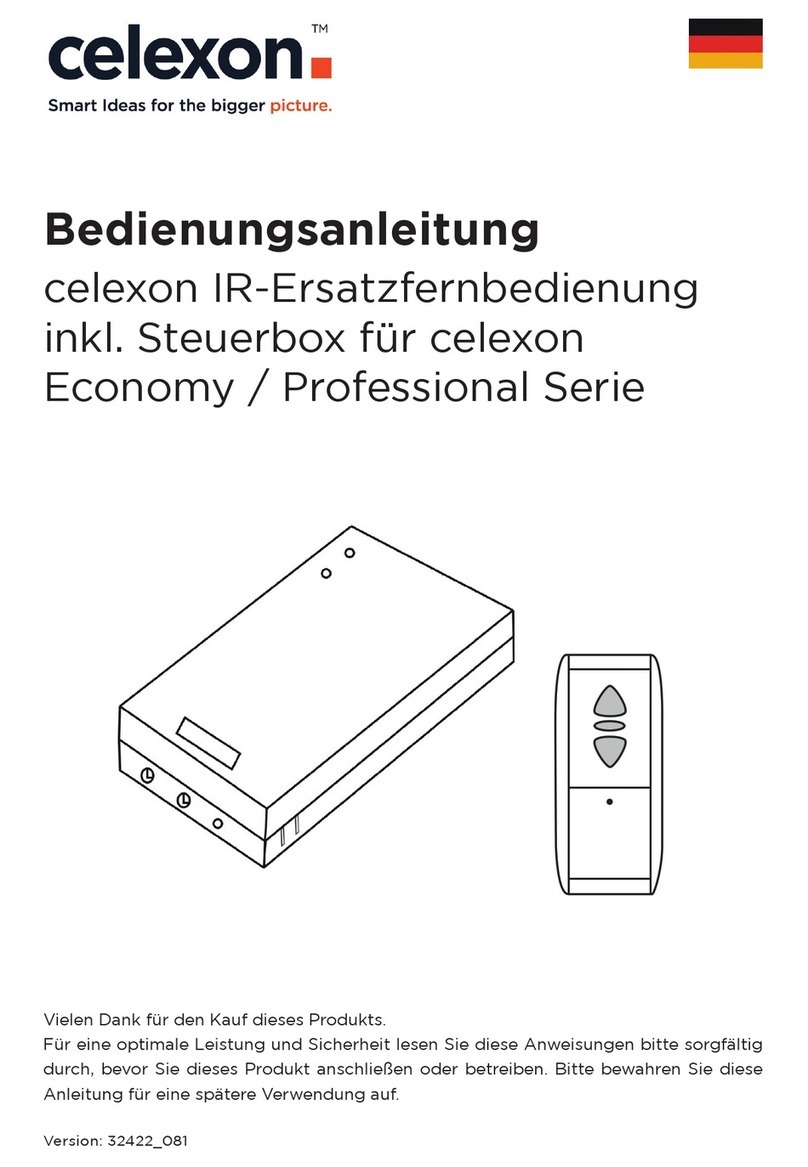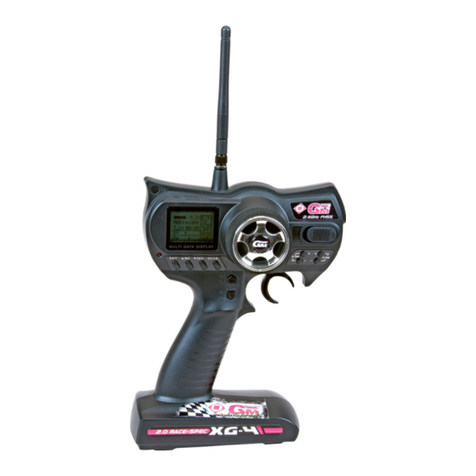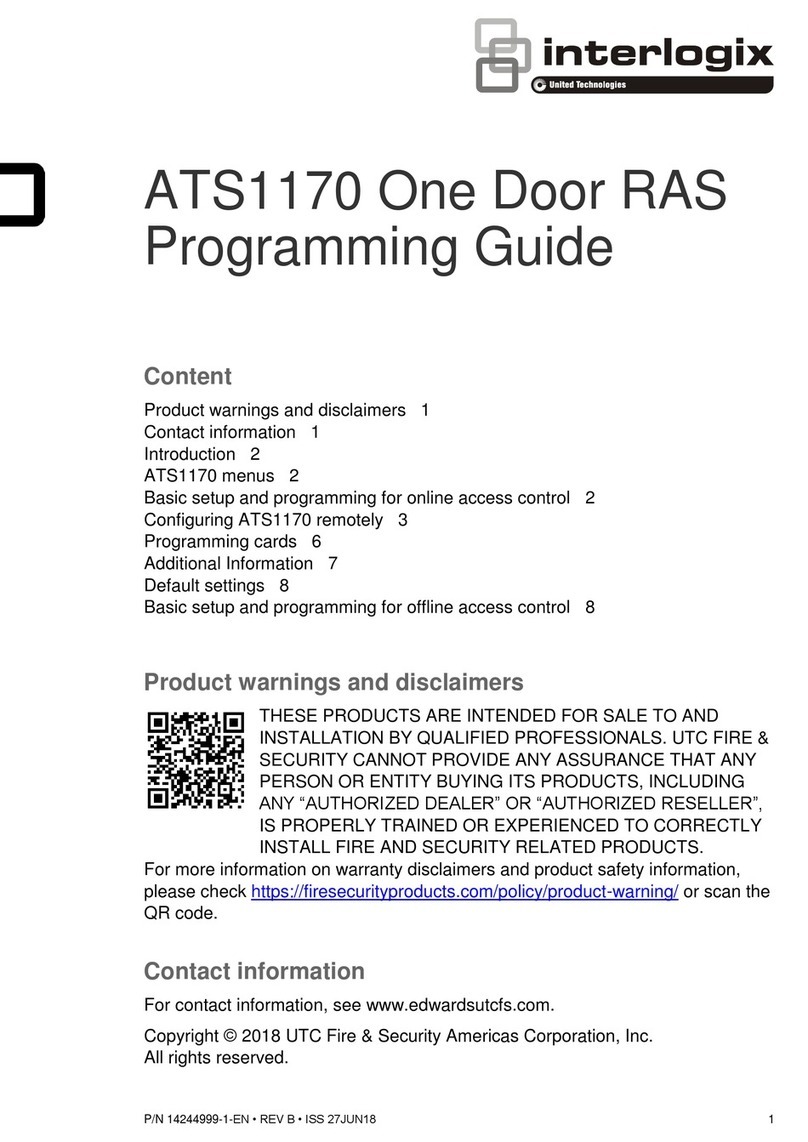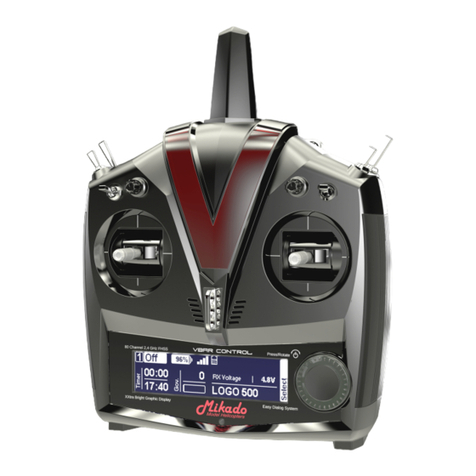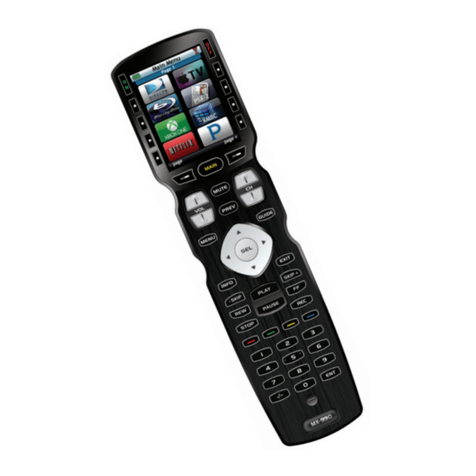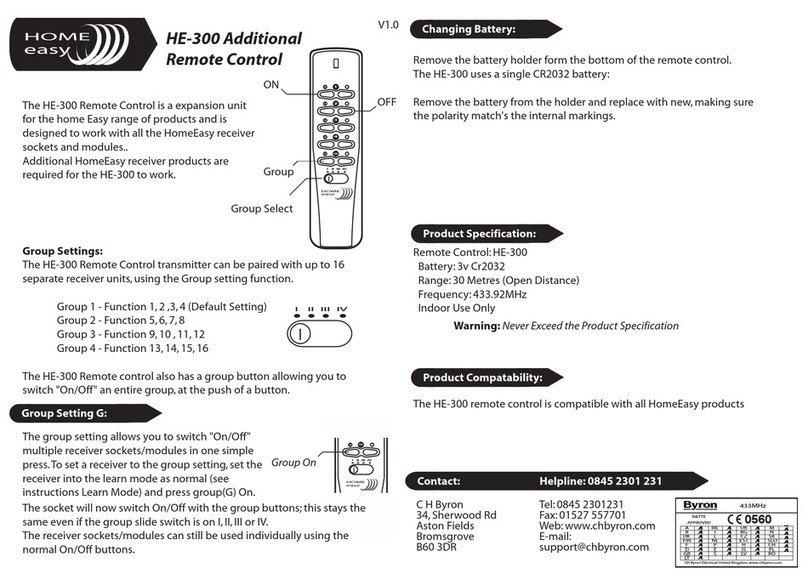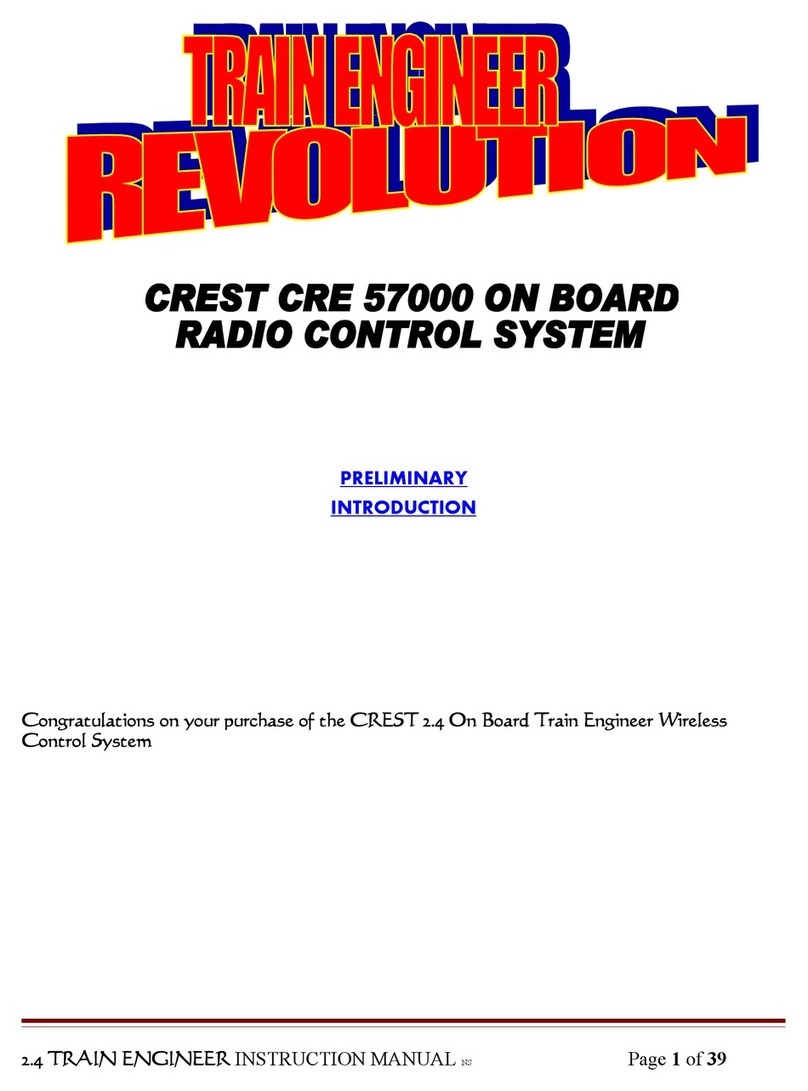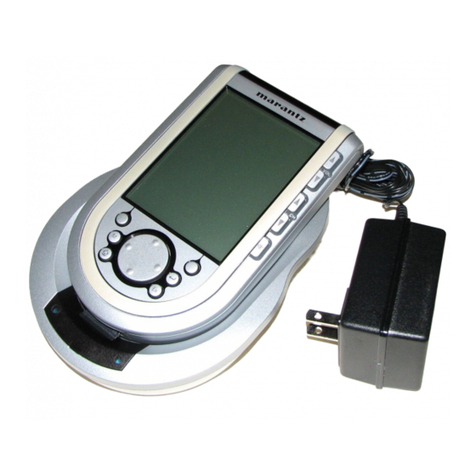Dex RC-DEX User manual

USER INSTRUCTIONS
RC-DEX
Remote control for
Widex tinnitus devices

2
SYMBOLS
The following symbols will be used throughout the
manual:
WARNING
Messages with this heading indicate adverse reactions, potential
safety hazards and inadequate performance of device.
CAUTION
Messages with this heading indicate/include information regard-
ing any special care to be exercised.
Non-ionizing radiation.
Not for general waste.

3
CONTENTS
SYMBOLS . . . . . . . . . . . . . . . . . . . . . . . . . . . . . . . . . . . . . . .
YOURNEWDEX™REMOTECONTROL . . . . . . . . . . . . . . .
Intendeduse . . . . . . . . . . . . . . . . . . . . . . . . . . . . . . . . . . . . .
Descriptionofdevice . . . . . . . . . . . . . . . . . . . . . . . . . . . . . .
Frontview. . . . . . . . . . . . . . . . . . . . . . . . . . . . . . . . . . .
Rearview . . . . . . . . . . . . . . . . . . . . . . . . . . . . . . . . . . .
ACCESSORIES . . . . . . . . . . . . . . . . . . . . . . . . . . . . . . . . . . .
THEBATTERY. . . . . . . . . . . . . . . . . . . . . . . . . . . . . . . . . . . .
Changingthebattery. . . . . . . . . . . . . . . . . . . . . . . . . . . . . .
USINGTHEREMOTECONTROL. . . . . . . . . . . . . . . . . . . .
Operatingrange . . . . . . . . . . . . . . . . . . . . . . . . . . . . . . . . .
Light-emittingdiode . . . . . . . . . . . . . . . . . . . . . . . . . . . . .
Adjustingthevolume. . . . . . . . . . . . . . . . . . . . . . . . . . . . .
Tomutethetinnitusdevices . . . . . . . . . . . . . . . . . .
Changingprograms . . . . . . . . . . . . . . . . . . . . . . . . . . . . . .
CARINGFORYOURREMOTECONTROL . . . . . . . . . . . .
WARNINGS . . . . . . . . . . . . . . . . . . . . . . . . . . . . . . . . . . . . .
INCASEOFMALFUNCTION. . . . . . . . . . . . . . . . . . . . . . .
REGULATORYINFORMATION . . . . . . . . . . . . . . . . . . . . .

4
YOUR NEW DEX™ REMOTE CONTROL
We hope you will be pleased with your Widex remote
control. These user instructions explain how your re-
mote control should be operated.
WARNING
This booklet contains important information and instructions.
Read this booklet carefully before you start using your remote
control.
Intended use
This remote control is intended to operate the Widex
tinnitus devices.

5
Description of device
Your tinnitus devices use a proprietary wireless tech-
nology, the WidexLink, to enable communication be-
tween the left and the right device, as well as between
the devices and the RC-DEX.
The RC-DEX remote control gives simple access to
functions such as volume adjustment and program
change. It is also provided with a light-emitting diode
(LED) for visual indication.
Front view
1. LED
2. Volume up
3. Program toggle
4. Volume down 1.
2.
3.
4.

6
Rear view
1. Battery cover
2. Eye for key ring/string attachment
1.
2.

7
ACCESSORIES
1. Battery
2. Key ring/string
1.
2.

8
THE BATTERY
The battery type for this remote control is:
Lithium CR2032
To obtain replacement batteries, please consult your
hearing care professional. Please note the expiration
date and the recommendations on the battery pack re-
garding disposal of used batteries.
The remote control is on when a functioning battery is
correctly placed in the battery compartment. Battery
life is up to 12 months, depending on how often you ac-
tivate the remote control keys.

9
Changing the battery
1. Slide the battery cover downwards to remove it.
2. Press the battery as illustrated to tip it up, and take
it out, or just turn the device around and let the
battery fall out in your hand.
NOTE
When changing battery, it is a good idea to hold the remote
control over a close, soft surface.
1. 2.

10
3. Insert the new battery at an angle as illustrated and
press to click the battery into place. The plus (+)
sign on the battery must face upwards.
4. Replace the battery cover.
3.
4.

11
USING THE REMOTE CONTROL
The remote control is provided with an eye for attach-
ment of a key ring or similar.
Operating range
The operating range from the remote control to the tin-
nitus devices is up to 1 m (approx. 3 ft).
Light-emitting diode
A green light in the diode indicates that one of the keys
on the remote control has been activated.
Adjusting the volume
Press the volume up key (+) briefly to raise the volume.
Press the volume down key (-) briefly to lower the vol-
ume.
When you activate the volume keys, you will hear a
brief beep-tone. When the maximum or minimum ad-
justment level is reached, you will hear a long beep-
tone.
To mute the tinnitus devices
Keep pressing the volume down key on the remote con-
trol after the long beep-tone has sounded and until it
stops. Pressing one of the volume keys briefly will bring
back the sound.

12
Changing programs
Using the program key of the remote control, you can
switch between the programs available in your tinni-
tus devices.
When you turn on your tinnitus devices, they will be
in the start-up program. From this program you access
the Zen program mode by a long key press (more than
1 second). Short presses on the program key will then
allow you to cycle between the different Zen programs.
You return to the start-up program with a long press
(more than 1 second) on the key.
Start-up program
Zen A Tones
Zen B Tones and Noise
Zen C Noise

13
CARING FOR YOUR REMOTE
CONTROL
The remote control is a valuable object and should be
treated with care. Here are some things you can do to
prolong the life of your remote control:
WARNING
• Do not expose the remote control to extreme temperatures
or high humidity.
• Do not immerse it in water.
CAUTION
• Clean the remote control with a soft cloth. Never wash your
remote control with water, cleaning solutions or other liquids.
• Avoid dropping the remote control.
CAUTION
• It is not recommended to keep your cell phone/PDA within
close proximity of the remote control e.g. same pocket.
• Never try to open or repair the remote control yourself.
(To be performed by authorized personnel only).

14
WARNING
Do not carry your remote control with you during X-rays,
MRIs and other scans or radiation treatments and never
place your remote control in a microwave oven. These are
some of the types of radiation that can damage your remote
control. Radiation from room surveillance equipment, burglar
alarms, cell phones and similar sources is weaker and will not
damage your remote control. However, on occasion radiation
from devices such as certain burglar alarms, automatic motion
detectors and other electronics may cause noticeable audible
interference during remote control and tinnitus device use.

15
WARNINGS
WARNING
Batteries can be dangerous if swallowed or used improperly.
Never put a battery or tinnitus device in your mouth for any
reason as you may risk swallowing it. Swallowing or improper
use can result in severe injury, or even fatalities. In case of in-
gestion, contact your physician immediately and the 24 Hour
National Button Battery Ingestion Hotline at (202) 625-3333.
• Keep your remote control and its parts, accessories and bat-
teries out of reach of children and anyone else who might
swallow such items or otherwise cause injury to themselves.
Do not change batteries in front of them and do not let them
see where you keep your battery supply. Discard used bat-
teries carefully.
• Do not use your remote control on aircraft or in hospitals
without permission.
• Do not use your remote control in mines or other areas with
explosive gases.
• Risk of explosion if battery is replaced by an incorrect type
or recharged.

16
CAUTION
(Risks) The use of the tinnitus devices/DEX should not interfere
with other devices such as a pacemaker. However, to be extra
cautious, Widex follows the guidelines recommended by the
manufacturers of implantable defibrillators and pacemakers
for their patients when using cell phones. Specifically, tinnitus
device wearers who also use a pacemaker should
• Keep the tinnitus devices (and/or any of the DEX accesso-
ries) at a distance of at least 15 cm/6 inches away from the
pacemaker and
• Do not carry the tinnitus devices (and/or any of the DEX ac-
cessories) in a shirt pocket or close to the chest.
• If any interference is observed, do not use the tinnitus devic-
es (and/or DEX) and contact your pacemaker manufacturer
and hearing care professional immediately.
• Although your remote control has been designed to comply
with the most stringent international electromagnetic com-
patibility standards, the possibility cannot be excluded that it
may cause interference with other equipment, such as med-
ical devices.

17
IN CASE OF MALFUNCTION
This page includes some quick advice if your remote
control fails or performs unsatisfactorily. If problems
persist, contact your hearing care professional for as-
sistance.
Problem Possible cause Solution
Your remote
control does
not work
The battery is dead or
does not work
Change the battery
The battery in your
tinnitus device is
exhausted
Change the battery
Out of operating range
(< 1m/approx. 3 ft)
Move within operat-
ing range
Strong electromagnet-
ic interference
Move away from in-
terference source
RC-DEX and tinnitus
devices not matched
Contact your hearing
care professional

18
Problem Possible cause Solution
The tinnitus
devices do
not respond
with a corre-
sponding
change in vol-
ume or pro-
gram to the
RC-DEX
a. The RC-DEX is used
beyond the trans-
mission range
b. Strong electromag-
netic interference in
the vicinity
c. The RC-DEX and the
tinnitus devices are
not matched
a. Move the RC-DEX
closer to the tinni-
tus devices
b. Move away from
known source of
EM interference
c. Check with hearing
care professional
to make sure
RC-DEX is matched
with tinnitus devic-
es

19
REGULATORY INFORMATION
The following Table summarizes the technical details of the
WidexLinktechnologyasitisimplementedinthetinnitusdevices
Tinnitus
devices RC-DEX TM-DEX Bluetooth* -
NOAHlink
Antenna
type Inductive
antenna Inductive
antenna Inductive
antenna Embedded
ceramic an-
tenna
Antenna
dimen-
sions
Ø1.8 mm,
L - 4.85 mm Ø8 mm,
L – 20 mm Ø6 mm,
L - 8 mm NA
Modula-
tion FSK FSK FSK FHSS/GFSK,
π/4 DPSK,
8 DPSK
Magnetic
Field
Strength
(at 10 m
distance)
-54
dBA/m -13
dBA/m -26
dBA/m NA
Output
power
(EIRP**)
29 pW 21 nW 1.2 nW +4dB re.
1mW
Range < 1 m re-
mote unit
to tinnitus
device
< 30 cm be-
tween tinni-
tus devices
or tinnitus
device to
TM-DEX
< 1 m re-
mote unit
to tinnitus
device
< 30 cm
between
tinnitus
device
and TM-
DEX
< 10 m be-
tween PC
and NOAH-
link
Center
frequency
10.6 MHz 10.6 MHz 10.6 MHz 2.4 GHz

20
Channel Single
channel ra-
dio
Single
channel
radio
Single
channel
radio
5 logical
channels
Band-
width 660 kHz
(-15 dB) 660kHz
(-15 dB) 660kHz
(-15 dB) 1 MHz
Data-rate 212 kbit/
second
(raw chan-
nel capaci-
ty)
212 kbit/
second
(raw
channel
capacity)
212 kbit/
second
(raw
channel
capacity)
2.1 Mbps
Data flow Simplex or
semi-
duplex ca-
pability
Simplex
capability Simplex
or semi-
duplex
capability
Time divi-
sion duplex
(TDD)
Protocol Random
Access – no
collision
avoidance
Random
Access –
no colli-
sion
avoidance
Random
Access –
no colli-
sion
avoidance
Packet-
based pro-
tocol, time
divided; se-
cure Serial
Port Profile
(SPP)
* Bluetooth specification v2.0 + EDR published by the Bluetooth
Special Interest Group (SIG).
** EIRP = Equivalent isotropically radiated power.
Bluetooth Identifier: B01837
Reference number of QPN: NOAHLinkV1.2_412832_QPN_E1
Other manuals for RC-DEX
1
Table of contents
Other Dex Remote Control manuals
